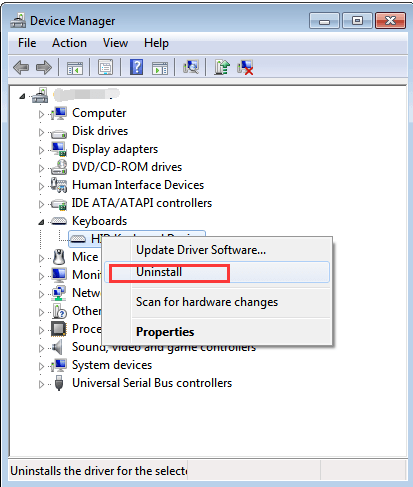Use the links on this page to download the latest version of Apple Keyboard drivers. All drivers available for download have been scanned by antivirus program. Installing BootCamp Windows Support Drivers BootCamp Drivers for Windows The Mac OS X operating-system is an major consideration for owning an Apple computer, however there could be needs where a user would want to install an Windows OS along with it in dual booting mode.
In an earlier post I described a problem that since
installing WinXP SP2 I can no longer enter standby as an
error reports that the EnE Keyboard KB 3886 driver is
preventing the system from entering standby.
One suggestion was to uninstall the keyboard driver from
Device Manager and to reboot, and let Windows discover
and reinstall the driver for the keyboard.
How can I be sure that the driver is in the Windows
driver database? I am just concerned that if I uninstall
the driver that Windows may not recognise the keyboard
and report 'Unknown Device'. Is this concern unfounded?
Is it just the driver files in Windows/System 32 and
registry which is emptied, and does the system read the
inf file on reboot to find the driver?
I'm also concerned that the keyboard driver may be
associated some way with the touchpad and mouse driver
and I am concerned that if I play with the keyboard
driver that the mouse may stop working or some such thing.
I'd like to give the uninstall/reinstall a go but I don't
want to end up with an unworkable system.
Related Articles
- 1 Install a Dell USB Keyboard
- 2 Program a Lenovo Keyboard
- 3 Fix a Belkin Keyboard Driver
- 4 Unlock a Frozen Keyboard
A faulty keyboard driver can render your keyboard inoperable in Windows 7, which leaves you at the mercy of mouse-only operations. However, Windows offers an easy fix to this problem through the Device Manager, but your first step should be to verify the keyboard's connection and to make sure it is not physically damaged.
Examine the Keyboard
Examine your keyboard to make sure it is not physically damaged. While drivers can cause problems, sometimes it's the simplest things that cause a malfunction. If liquid was spilled into the keyboard, it is likely you will need to replace it. Also, examine the keyboard cord to make sure the wires are not exposed. If you are using a wireless keyboard, try changing the batteries and see if that solves your problem.
Keyboard Connection
Verify that the keyboard is properly connected. If your keyboard is not properly connected, it's possible that the driver did not load. Follow your keyboard's cable and make certain it is connected to the appropriate port. USB keyboards should be connected to a USB port on your computer, and round PS/2 port keyboards should be connected to the similarly-sized port that is labeled with a picture of a keyboard. Wireless keyboards should be connected according to the manufacturer's instructions.
Windows Driver
The standard Windows keyboard driver is packaged in Windows 7, so you do not need installation CDs or additional downloads. To install the best driver for your keyboard, uninstall the original driver and allow Windows 7 to reinstall it after rebooting. This is performed through Windows' Device Manager, but getting there may require mouse-only navigation.
Using Only a Mouse
Click the Windows 'Start' button, right-click 'Computer' and select 'Manage' to open the Computer Management window. Select 'Device Manager' from the pane on the left. Expand the Keyboards section, right-click on the keyboard you want to repair and choose 'Uninstall.' Click the Windows 'Start' button and select 'Restart.' When your computer boots up, Windows will detect your keyboard and install the driver.
Proprietary Software
Some keyboards require proprietary Windows-based drivers to access advanced features of your keyboard, such as media controls and hot-keys. These drivers are available on the CD that accompanied your keyboard, but you can also acquire them from the manufacturer's website. Once the driver installation program is located, you simply need to run the program according to the instructions provided by the manufacturer.
Keyboard Driver Dell
References (1)
Windows Mac Keyboard Driver
Choose Citation Style
Install Keyboard Driver
